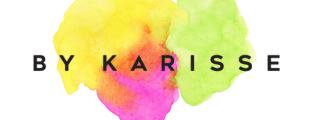Conversations With the Body, Part 3: When the Muscles Speak in Tension
We often think of stress as something that happens in the mind.
But more often, it’s the body that remembers.
Tension builds in quiet places—hands that stay clenched, hips that won’t release, arches that hold like they’re bracing for impact.
We shrug it off, stretch for a second, and move on.
But the body doesn’t forget. It keeps gripping.
Muscle tension is often the body’s way of holding it all together—literally.
When we don’t have time to pause, the body does it for us.
Tightening. Bracing. Protecting.
Over time, these patterns build beneath the surface.
Fascia stiffens. Lymph flow slows. The skin becomes puffy, dull, or dry.
The glow fades—not because we’re doing something wrong, but because the body is working overtime to hold what we haven’t released.
The good news?
Tension is not permanent.
The body wants to let go. We just have to give it the tools.
Ways to Listen
-
Do your hands feel tight or curled without realizing it?
-
Is your low back sore even after resting?
-
Do your feet clench or curl when you're focused or stressed?
-
Are your hips, temples, or jawline resistant to softening—even during movement or massage?
Tension doesn’t always announce itself.
Sometimes it hides behind focus, habit, or survival mode.
Ways to Support the Body’s Return
Letting go of tension isn’t about force—it’s about flow.
When we support the fascia, breath, and lymphatic rhythm, the body remembers how to soften again.
Here’s how we support that return:
Face Yoga
Just a few minutes a day of intentional facial movement—especially around the eyes, jaw, and forehead—can relieve built-up tension and bring circulation back to areas that have gone still.
This gentle practice improves muscle tone, reduces puffiness, and helps re-pattern stress responses in the face.
Cupping Sets
Gentle suction lifts fascia, stimulates lymph flow, and breaks up stuck patterns beneath the skin. Use on the face, arms, legs, or hips to improve circulation and reset areas of deep holding.
Detox Body Oil
Formulated with Blue Cypress, Peppermint, and Rosemary, this oil supports lymphatic flow and helps flush stagnation. Use after cupping, post-shower, or before restorative movement for better body flow and recovery.
Calm Body Soak
A magnesium-rich bath blend infused with Clary Sage, Lavender, and Himalayan salt to help relax muscles and soothe the nervous system. Soaking in warm water softens the fascia, draws out fatigue, and restores physical ease.
Healing Oil
With Chia Seed, Tamanu, and Helichrysum, Healing Oil is your go-to for post-release repair. Use after cupping, stretching, or bodywork to support recovery and reduce inflammation in skin and fascia.
Outside-the-Box Rituals to Release Tension
-
Lie on the floor for 5 minutes with your legs on a couch or chair. No phone. No podcast. Just gravity and stillness.
-
Roll a soft ball under your feet or glutes while you breathe—your fascia will thank you.
-
Breathe deeply into your belly with one hand on your chest and the other on your abdomen. Feel which one moves. Try switching the pattern.
-
Apply oil with both hands slowly—as if teaching your body how to be touched without rushing.
These aren’t indulgences. They’re reminders.
Closing Reflection
When your muscles speak in tension, they’re not misbehaving.
They’re protecting you. They’re doing their job.
But they don’t need to hold it all forever.
Whether it’s a Gua Sha stroke, a warm bath, a few moments of face yoga, or a deep breath you let yourself finish—these moments remind your body what it means to feel safe again.
And in that safety, you return to softness.
To strength.
To glow.











